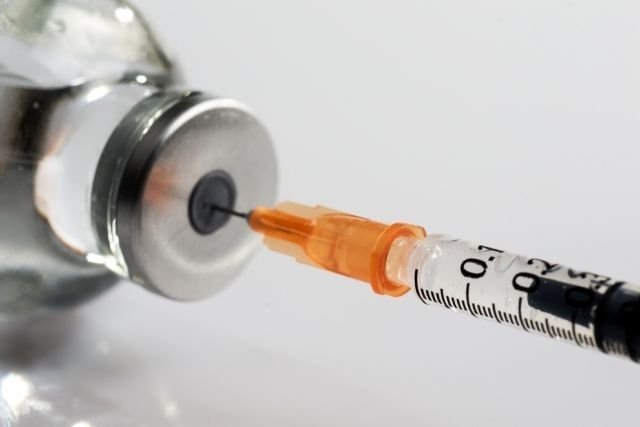Erysipelas treatment can be carried out through the use of antibiotics in the form of tablets, syrups or injections prescribed by the infectious disease specialist or general practitioner, for around 5 to 10 days, in addition to care such as rest and elevation of the affected limb to help de-swell the region.
Normally, erysipelas treatment can be done at home, however, there are situations in which hospitalization may be indicated, as in cases of very large lesions and symptoms such as fever or low blood pressure, for example.
Erysipelas is a skin infection caused by bacteria that leads to the appearance of symptoms such as redness of the skin, itching and a burning sensation. Understand better what erysipelas is and the main symptoms.

How the treatment is carried out
The main options for treating erysipelas are:
1. Antibiotics
The use of oral antibiotics, such as amoxicillin and cephalexin, is generally indicated for about 5 to 10 days to treat erysipelas. Furthermore, in case of allergy to penicillin, the doctor may recommend other options such as erythromycin or clindamycin.
However, when erysipelas affects large areas of the body, develops rapidly or causes a fever, for example, administration of antibiotics directly into the vein may be indicated, which must be done in the hospital.
2. Ointments
The use of ointments may also be recommended by the doctor as a way to complement antibiotic treatment. Erysipelas ointments also contain antibiotics and should be applied directly to the affected skin areas.
3. Analgesics and antipyretics
The use of analgesics and antipyretics, such as paracetamol, dipyrone or ibuprofen, may be recommended to relieve local pain or fever and should be used according to a doctor’s advice.
4. Home treatment
To aid recovery, reducing swelling and relieving pain, the doctor may recommend that the person elevate the affected limb and apply cold compresses to the area. Furthermore, it is recommended to rest during recovery, drink adequate amounts of water and keep the area affected by erysipelas clean and dry.
5. Surgery
Surgery for erysipelas is indicated in cases where an abscess forms, a cavity in the skin containing pus. Additionally, surgery may also be required in cases where erysipelas causes skin necrosis to remove dead tissue.
When it is necessary to stay in the hospital
Admission to the hospital may be indicated in case of:
- Redness affecting large areas of the body;
- Rapid increase in rednessespecially when it appears within a few hours and causes pain;
- Inability to take medications by mouth;
- Symptoms that indicate greater severitysuch as fever, low blood pressure or mental confusion;
- Signs of necrosissuch as darkening of the skin and loss of sensitivity;
- History of other illnessessuch as heart or kidney failure, diseases that affect immunity and diabetes, for example;
- Erysipelas that does not improve despite adequate treatment.
In these cases, due to the risk of erysipelas being more serious, hospitalization and the use of intravenous antibiotics are generally recommended.
How to prevent erysipelas
To prevent erysipelas, it is important to lose weight in case of obesity and treat diseases that affect the skin or cause swelling of the limbs, such as heart or venous failure. In addition, it is also recommended to treat mycoses that may affect the nails or feet and skin wounds in accordance with medical advice.
In some cases, such as when erysipelas appears repeatedly, the doctor may also recommend the use of antibiotics to prevent new infections.
Bibliography
- UPTODATE. Acute cellulitis and erysipelas in adults: Treatment. 2022. Disponível em: <https://www.uptodate.com/contents/acute-cellulitis-and-erysipelas-in-adults-treatment>. Acesso em 11 nov 2022
- SUKUMARAN, Vichitra. Bacterial skin and soft tissue infections. Aust Prescr. Vol.39, n.5. 159–163, 2016
- ORTIZ-LAZO, E. et al. An Update on the Treatment and Management of Cellulitis. Actas Dermosifiliogr (Engl Ed). Vol.110, n.2. 124-130, 2019
- BRINDLE, Richard J; O’Neill, Louise A; WILLIAMS, O. M. Risk, Prevention, Diagnosis, and Management of Cellulitis and Erysipelas. Current Dermatology Reports. Vol.9. 73–82, 2020
- STEVENS, Dennis L. et al. Practice Guidelines for the Diagnosis and Management of Skin and Soft Tissue Infections: 2014 Update by the Infectious Diseases Society of America. Clinical Infectious Diseases. Vol.59, n.2. 10–52, 2014
- STATPEARLS. Erysipelas. 2022. Available at: <https://www.ncbi.nlm.nih.gov/books/NBK532247/>. Accessed on Nov 11, 2022
- DALAL, Adam et al. Interventions for the prevention of recurrent erysipelas and cellulitis. Cochrane Database Syst Rev. Vol.6. 2017
- CLEBAK, Karl; MALONE, Michael A. Skin Infections. Prim Care. Vol.45, n.3. 433-454, 2018

Sign up for our newsletter and stay up to date with exclusive news
that can transform your routine!
Warning: Undefined array key "title" in /home/storelat/public_html/wp-content/plugins/link-whisper-premium/templates/frontend/related-posts.php on line 12
Warning: Undefined array key "title_tag" in /home/storelat/public_html/wp-content/plugins/link-whisper-premium/templates/frontend/related-posts.php on line 13




